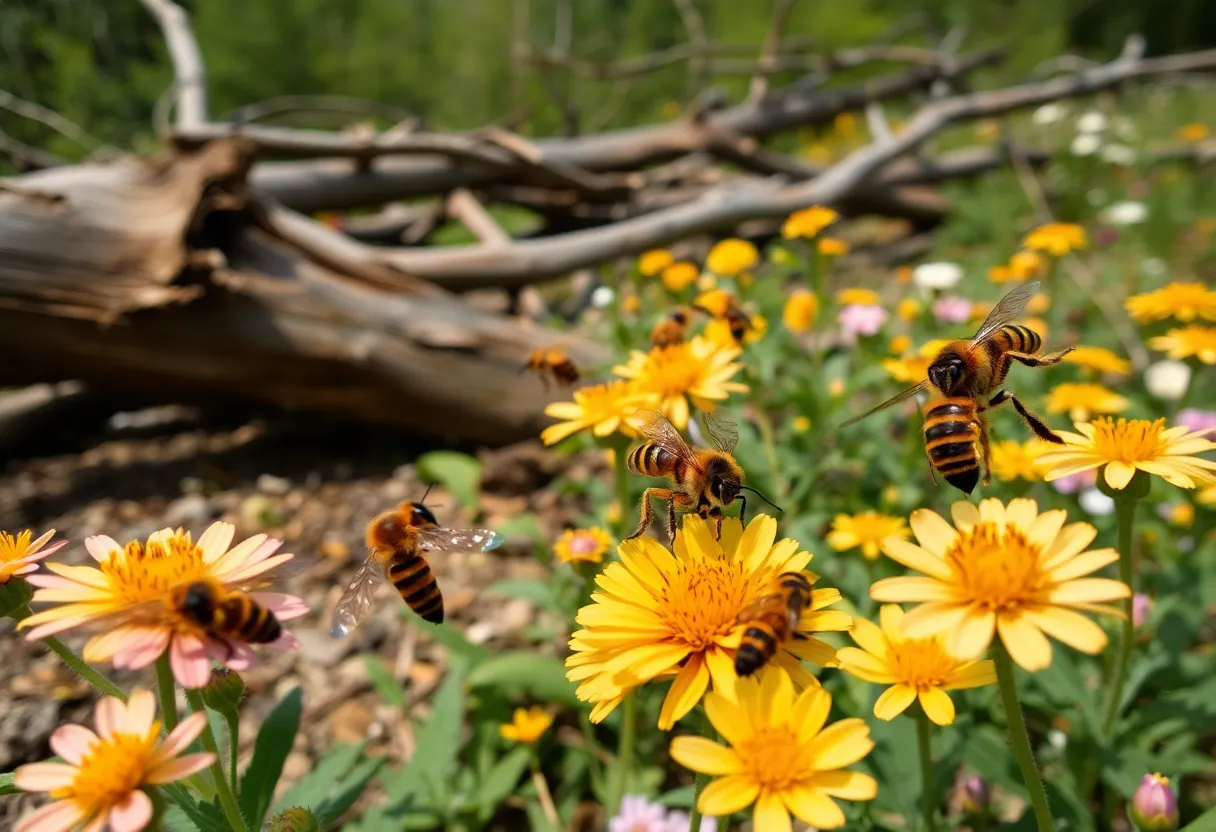News Summary
Following Hurricane Helene, Asheville’s insect ecosystem is experiencing notable shifts. The hurricane’s effects have led to unexpected population changes among mosquitoes, yellowjackets, and even the rise of deer ticks. Experts warn of potential pest invasions while highlighting the unique adaptations of local species. With concerns about invasive plant species and the overall health of the ecosystem, residents are encouraged to manage their landscaping to promote a balanced environment.
Asheville’s Insect Ecosystem Faces Post-Hurricane Changes
As the effects of Hurricane Helene continue to ripple through Asheville, the local insect population is adjusting in unexpected ways. With 1,410 insect species listed for North Carolina, scientists and entomologists find themselves facing a wave of uncertainty. How did the storm impact these buzzing and crawling critters? Let’s dive into the post-hurricane landscape and see what the buzz is all about!
Mosquito Mayhem and Yellowjackets on the Rise
Typically, post-hurricane conditions lead to a spike in mosquito populations. However, October following Helene turned out to be quite unique, becoming the fourth driest on record for Asheville. With only 0.3 inches of rain, many expected fewer mosquitoes – but nature loves to surprise us!
On the flip side, yellowjackets are taking advantage of the upheaval, with their populations soaring. The storm’s heavy flooding has displaced their nests, prompting officials to stock up on EpiPens and Benadryl for healthcare centers to deal with potential stings. Thanks to the nonprofit organization Direct Relief, over 2,000 EpiPens have been distributed to keep locals safe from these aggressive wasps.
Nature’s Response: Flowers, Pollinators, and the Rise of Deer Ticks
The ecosystem is responding to the hurricane in fascinating ways, with fallen trees creating sunny spots perfect for blooming plants. This is great news for pollinators, but there’s a catch! Most of the trees that were knocked down, such as oaks and pines, aren’t a nectar source for bees, as pointed out by experts. Meanwhile, the deer tick population is on the rise with deer acting as their carriers, raising concerns about tick-borne diseases in the western part of the state.
A previous bioblitz in the area aimed to keep tabs on these nasty little critters. Interestingly, while a mild winter usually supports tick growth, the 22 days of freezing temperatures last January might just help curtail their spread come spring.
The Hidden Benefits and Risks of Deadwood
There’s a silver lining to the devastation: abundant deadwood provides a feast for decomposers like beetles, roaches, ants, and termites. But here’s an interesting wrinkle – overcrowding in their new home may force these insects to seek out new decaying wood. This could lead more pests like mice and snakes to creep into homes. Homeowners, take note!
Cicadas and Fire Ant Adaptation
Meanwhile, cicadas are expected to make a splash this year as they emerge from their underground pupae. In 2025, we can even anticipate an increase in their numbers with the arrival of Brood IV. In a quirky twist, fire ants have shown remarkable adaptability as they link together to float during hurricanes. This resiliency is something to think about as we face these nature’s surprises.
The Invasion of Joro Spiders
Speaking of surprises, the Joro spider, which has made its way from Asia, is now a familiar sight in North Carolina, especially since their notable population boom began in 2021. With their colorful yellow and gray striped abdomens, these spiders can have a leg span of up to four inches. Thankfully, humans have nothing to fear as there have been no reported bites; their venom is relatively mild and primarily aimed at catching insects.
Interestingly, Joro spiders prefer sunny urban and forest edge environments for their web creations. They utilize a unique technique known as “ballooning,” where they emit silk strands and go with the wind to spread to new areas. However, entomologists are still studying the long-term impact they may have on local ecosystems.
Future Concerns and Tips for Management
As the aftermath of Hurricane Helene unfolds, concerns are surfacing about invasive plant species flourishing in the disruptions left behind. Species like wild pigs and armadillos may also begin to thrive in North Carolina, adding another layer of complexity to local ecosystems.
Residents are encouraged to manage their landscaping strategically in order to keep local insect populations in check. It’s an ongoing effort to strike a balance between humans and nature as we navigate these changes together.
Deeper Dive: News & Info About This Topic
HERE Resources
UNCA Applies Institutional Neutrality to Gaza Protests and Social Justice Displays
2024 Total Eclipse Will Allow Asheville, WNC, to Travel to Another World, Professor Says
Additional Resources
- Charlotte Observer: Asheville’s Insect Ecosystem Faces Post-Hurricane Changes
- Trib Papers: Tick Populations Rise Following Hurricane Helene
- ABC11: Joro Spiders Spread East into North Carolina
- Star News Online: Joro Spider and Emerald Ash Borer in Wilmington, NC
- Wikipedia: Joro Spider







